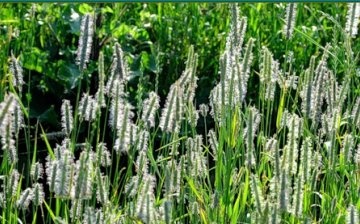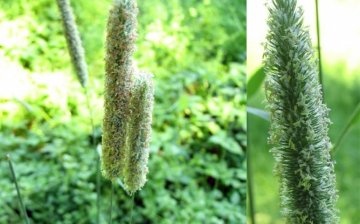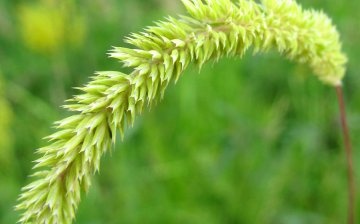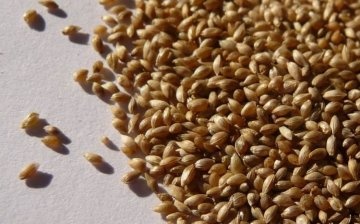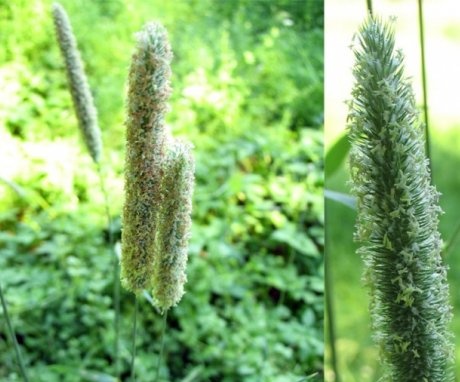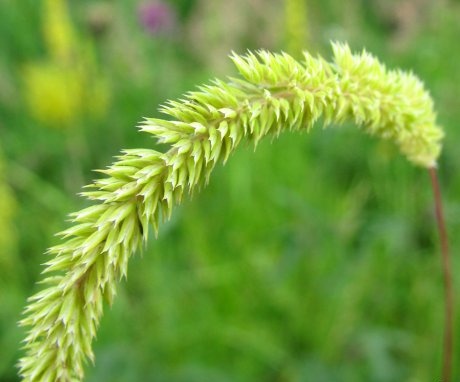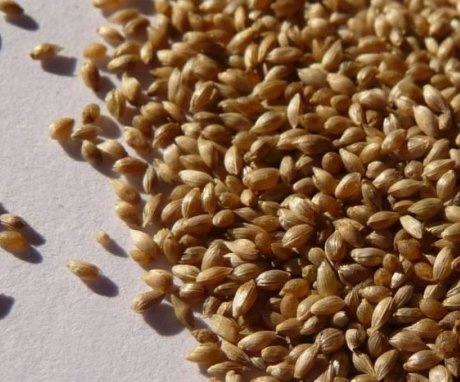Timothy meadow: description of the species and features of development
The full name of the plant is meadow timothy. It is a perennial loose shrub cereal with a small rhizome. Most often, meadow timothy is found in Europe and Asia Minor, but this does not mean that it is not grown in other extratropical regions. On the territory of the CIS, timothy is found in any area, except for the desert and arctic. For example, an introduced plant can be found in the Far East.
Content:
- Description of the species meadow timothy
- Features of the development and flowering of cereals
- Harvest quality
Description of the species meadow timothy
Characteristic features of the plant:
- The length of the stem can be from 20 to 80 cm, the stem is thin from 1 to 3 mm, more durable at the base.
- The leaves are narrow, from up to 3 to 10 mm, but long, up to 15 cm, flat, color zero-green, mostly smooth, rough at the edges, no ears. There are also stem leaves, they can be protruding, but more often horizontally extended, drooping.
- The sheaths of Timofeevka are not closed, pointed, the structure is rough, the small uvula can be both sharp and blunt.
- Timothy inflorescence - a sultan, a dense panicle, can be shaped like a cylinder or a cone, the top is rounded, the inflorescence length is from 2 to 10 cm. Along the entire length of the inflorescence, the branches adjoin the main axis and if you bend it, the blades will not stand out. This is called sessile spikelets.
- Spikelets are light green in color, the scales on them do not exceed 4 mm in length, each is located separately, the edge is ciliated.
- The scales on the flowers are much smaller than the spikelets, about 3 times, at the end each of them is serrated, have longitudinal veins.
As for the pistils and stamens, the timothy has 3 stamens, the anthers are purple. A caryopsis is about 2 mm long, if you collect 1000 seeds, then their total weight will be only 0.4 grams.
Features of the development and flowering of cereals
The most favorable conditions for the development of timothy:
- Near the roads
- In rare forests
- Fields
- Dry meadows
- Wet meadows
The grass grows quietly with other plantswithout having a negative impact.
Timothy meadow loves moisture, for this feature, it resembles pasture ryegrass, both of these plants, with excessive precipitation or a close location of groundwater, feel bad. They also do not tolerate drought, especially a dry, difficult period for seedlings, during the rooting and development of secondary roots.
Timothy grass is frost-resistant, easily tolerates winter, even after a fierce winter, when the snow melts, the plant remains green as before.
Vegetation usually occurs at the end of April, and further heading depends on the growing / cultivation condition and variety, usually from one to two months, full flowering starts from 50 to 80 days.
If we compare timothy with other cereals, then it is considered late, according to this criterion it is only overtaken by the white bent.
Timothy is a spring-winter and spring type cereal. If favorable conditions are provided: a favorable temperature regime and the amount of moisture, then in the same year it can bloom and emasculate. Flowering begins in late June-early July, that is, approximately on the 70th day from the spring regrowth.
Flowering begins in the morning, while high humidity and warm weather lasts.
Under favorable conditions, the sultan blooms completely in 5 days, if the weather is cloudy, then this period will last for another 5 days. First, the upper part of the inflorescence opens, then gradually the lower one.
Seeds appear in about 30 days, the seeds are small, oval in shape, up to 2 mm long.
Harvest quality
Mix timothy when growing prefer with clover white or red.
It is also used to create pastures and hayfields in problem areas, for example, drained swamps, low-lying meadows, mountainous areas, etc.
One centner of the crop contains 4.1 kg of protein, which is 40.5 feed units, if we consider the value of grass, then it contains 1.7 kg of protein, that is, 28.8 feed units.
Hay contains a lot of vitamin C and carotene.
In the pasture and hayfields, it is well eaten by all animals and birds. One hectare of land can be harvested up to 80 quintals of hay and up to 6 quintals of seeds.
The best soils for growing timothy:
- Cultivated peatlands.
- Alluvial.
- Clay.
- Loamy.
- Fertile, moderately moist.
Timothy grass has high feed qualities and gives a good harvest. In one year, up to two mows are obtained, or mowing and aftertaste.
If you do the first mowing during the beginning of flowering grass or during heading, then the fodder value of the plant increases significantly, the amount of protein per hectare increases by 20%, and if nitrogen fertilizers are applied, then by 40%.
But there are other varieties of timothy that do not like early mowing. If you make an early cut, then next year the yield will decrease significantly.
Timofeyevka does not tolerate grazing. If you use the area for pasture, then every year the amount of the harvest will gradually decrease, which cannot be said about the use of hay.
More information can be found in the video.



